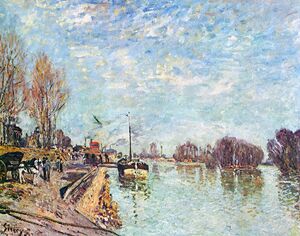Suresnes

Suresnes, France was the birthplace in 1594 of Marguerite Naseau. It is about six miles west of the center of Paris, on the west bank of the Seine.
Mont Valérien, a hill at the western edge of Suresnes, attracted lay people who sought to live prayerfully and in solitude. In 1554, Guillemette Faussart became the first woman to live there as a hermit. Three large crosses, to evoke Calvary, were erected near her hermitage. In the 17th century, a large Way of the Cross was established; its chapels, built by members of the French court, featured life-sized paintings of the Passion.
By the time of the Bourbon Restoration, the religious significance had given way to military purposes. Fort Mont-Valérien was built in 1841 and in 1917 the town donated property on the mont for an American war cemetery. Through World War II, the mont was the site of a prison run by the Nazi occupation. Prisoners were executed about a hundred yards from the abandoned chapel in which they had been held. Abbé Franz Stock served there throughout the war. When he died suddenly in 1948, Nuntius Angelo Roncalli (later Pope John XXIII) himself presided at his funeral, a recognition of Abbé Stock's extraordinary service during and after the war.
In 1945 Charles de Gaulle consecrated a national memorial on the site, commemorating the French Resistance.
Suresnes saw the development begun in 1919 of an early "mixed use" project, the Cité-Jardins. Innovatively, it aimed to provide modern living facilities for all ages in a setting with community health programs, cultural opportunities, churches, schools, and green spaces. Renovations were carried out between 1983 and 1996.
Today Suresnes, though densely populated, has revived vineyards established in the 18th century and produces about 6,000 bottles each year. Its economy is bolstered by numerous industries, including Dussault and Philips. A number of research and high-technology companies are based there or have significant presences, as well.
